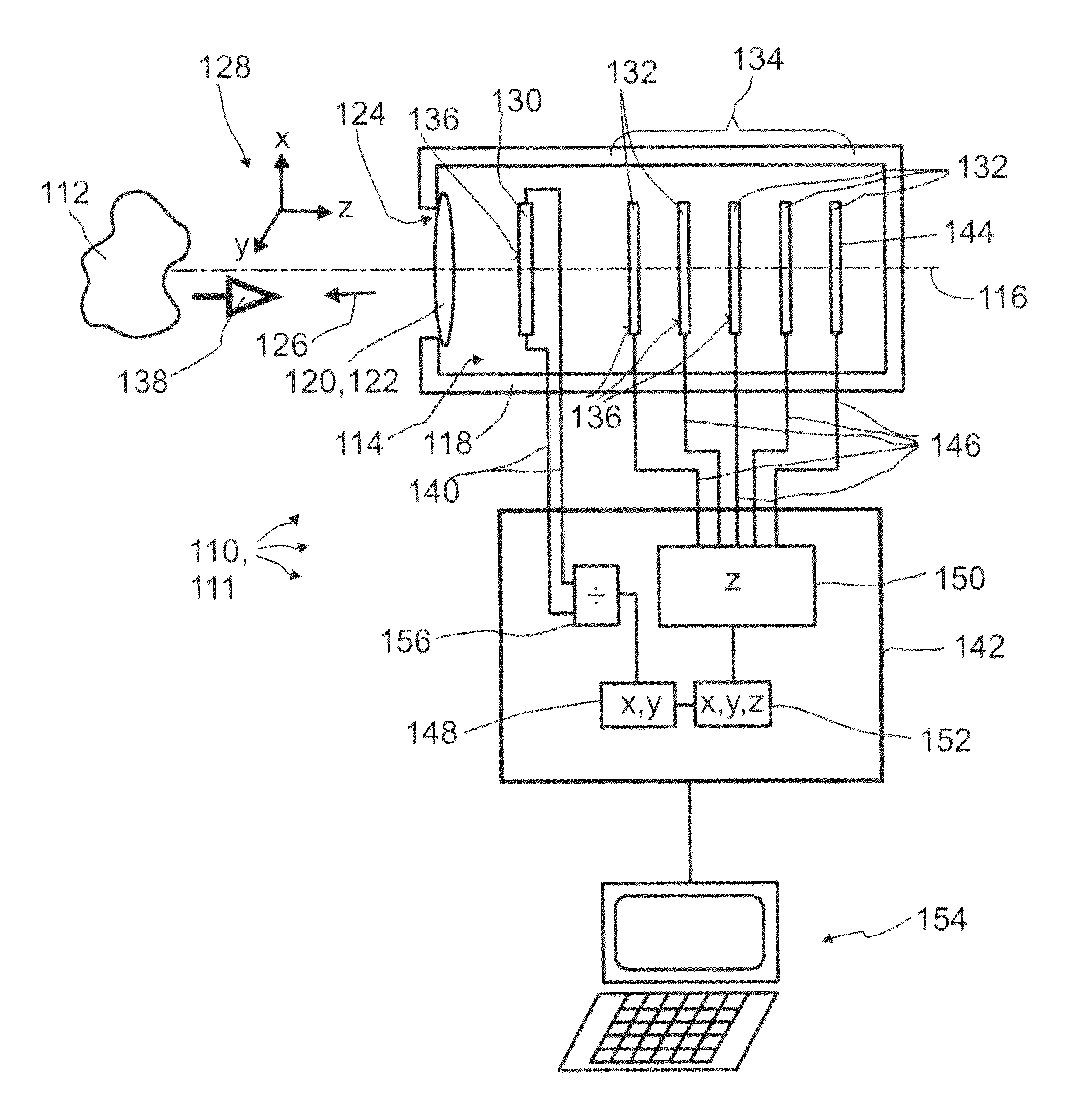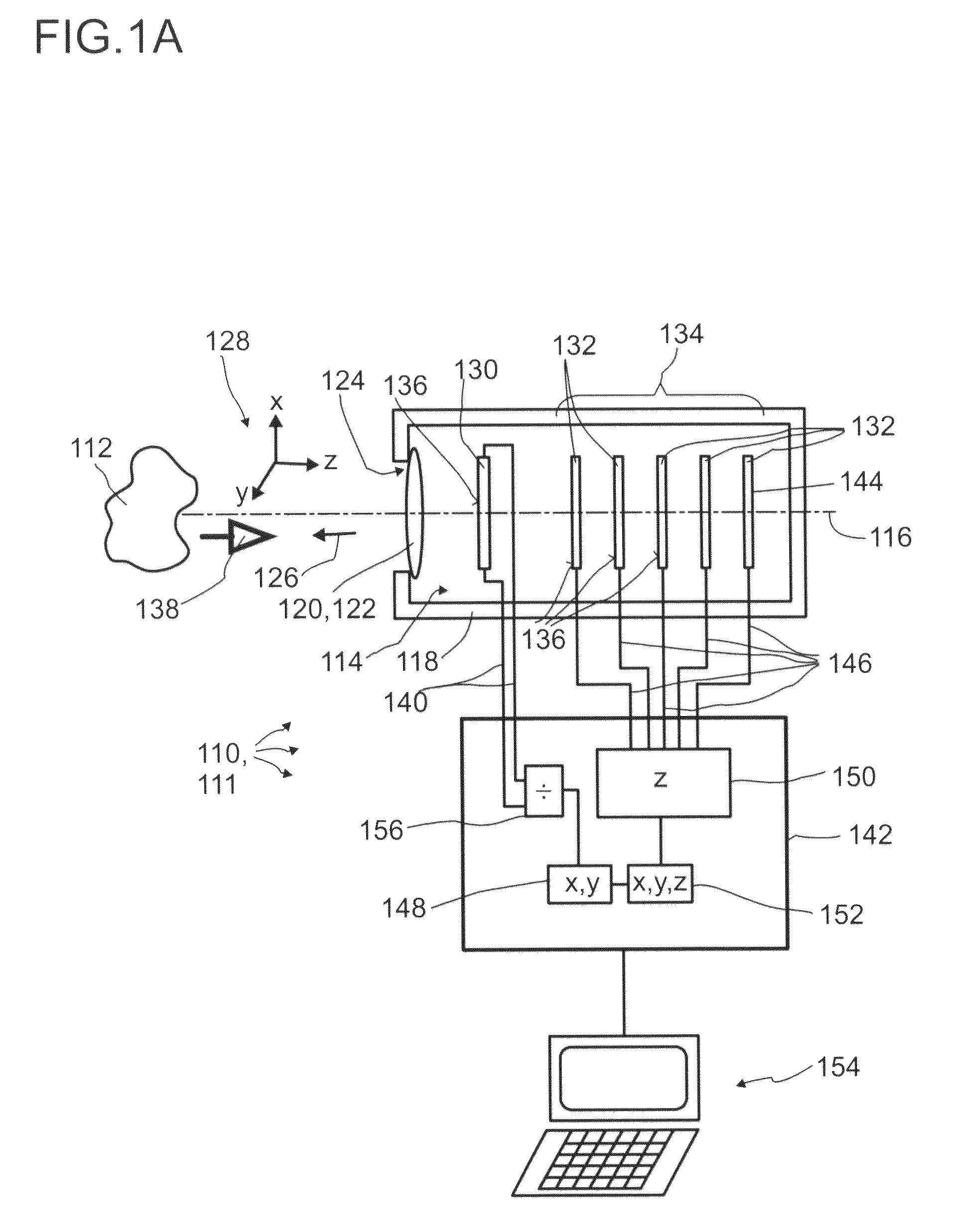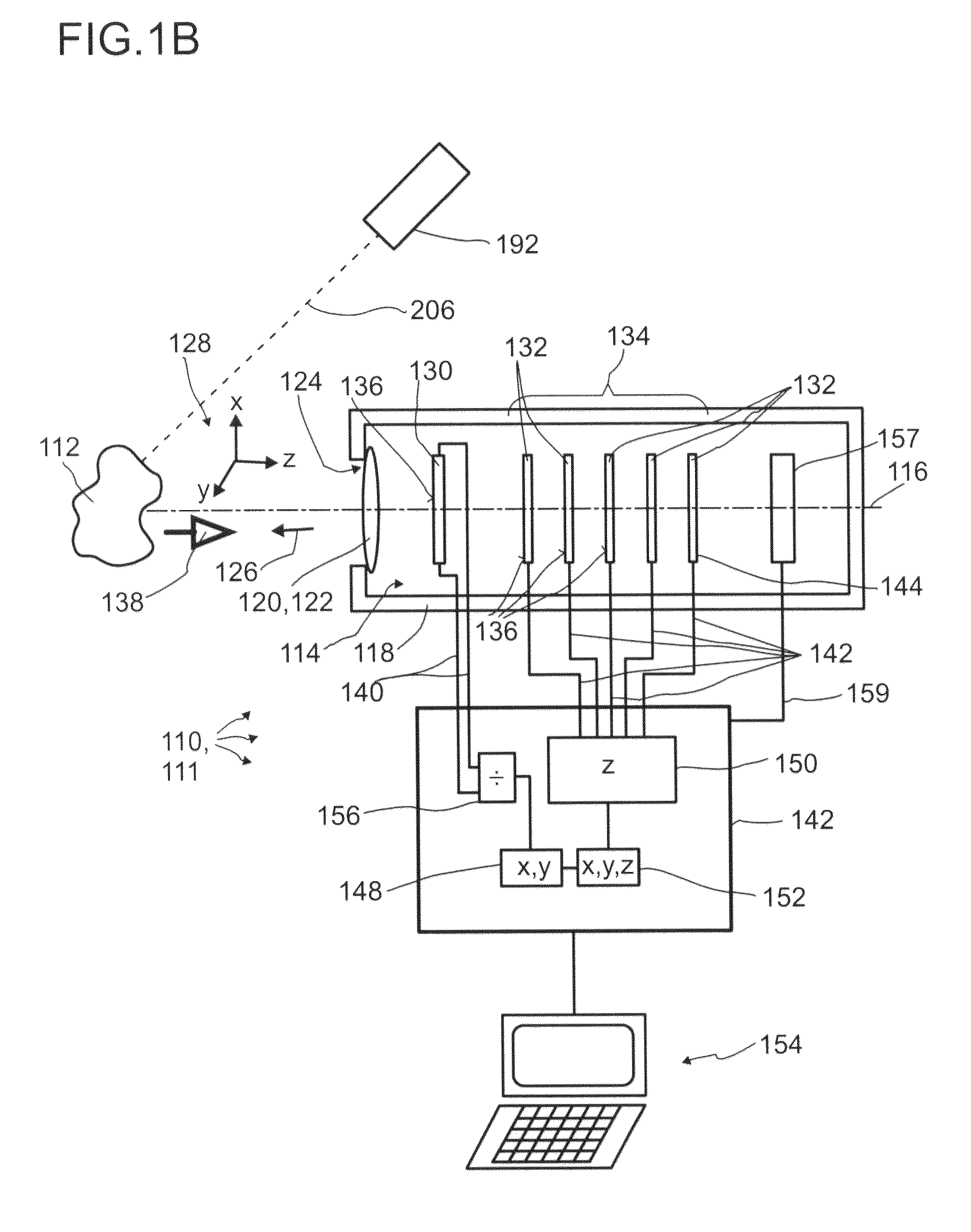Detector comprising a transversal optical sensor for detecting a transversal position of a light beam from an object and a longitudinal optical sensor sensing a beam cross-section of the light beam in a sensor region
a transversal optical sensor and transversal technology, applied in the field of detectors, can solve the problems of overlapping volumes, information can be recorded, and the origin of signals becomes unidentifiabl
- Summary
- Abstract
- Description
- Claims
- Application Information
AI Technical Summary
Benefits of technology
Problems solved by technology
Method used
Image
Examples
Embodiment Construction
[0466]FIG. 1A illustrates, in a highly schematic illustration, an exemplary embodiment of a detector 110 according to the invention, for determining a position of at least one object 112. The detector 110 preferably may form a camera 111 or may be part of a camera 111. Other embodiments are feasible.
[0467]The detector 110 comprises a plurality of optical sensors 114, which, in the specific embodiment, are all stacked along an optical axis 116 of the detector 110. Specifically, the optical axis 116 may be an axis of symmetry and / or rotation of the setup of the optical sensors 114. The optical sensors 114 may be located inside a housing 118 of the detector 110. Further, at least one transfer device 120 may be comprised, such as one or more optical systems, preferably comprising one or more lenses 122. An opening 124 in the housing 118, which, preferably, is located concentrically with regard to the optical axis 116, preferably defines a direction of view 126 of the detector 11...
PUM
 Login to View More
Login to View More Abstract
Description
Claims
Application Information
 Login to View More
Login to View More - R&D
- Intellectual Property
- Life Sciences
- Materials
- Tech Scout
- Unparalleled Data Quality
- Higher Quality Content
- 60% Fewer Hallucinations
Browse by: Latest US Patents, China's latest patents, Technical Efficacy Thesaurus, Application Domain, Technology Topic, Popular Technical Reports.
© 2025 PatSnap. All rights reserved.Legal|Privacy policy|Modern Slavery Act Transparency Statement|Sitemap|About US| Contact US: help@patsnap.com



